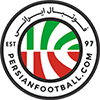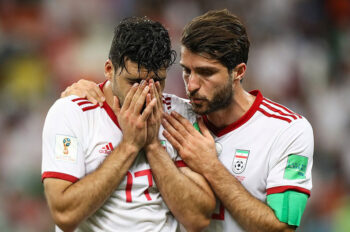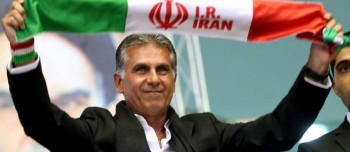“The Difference Between Iranian And Japanese Football”
 Goal.com – Iran’s defeat to Brazil and Japan’s stirring win over Argentina highlights the difference between the two Asian powerhouses, writes Niloufar Momeni.
Goal.com – Iran’s defeat to Brazil and Japan’s stirring win over Argentina highlights the difference between the two Asian powerhouses, writes Niloufar Momeni.
Asia lured two world football powerhouses to its shores this week as Japan hosted Argentina on home soil while Iran faced Brazil in Abu Dhabi.
For obvious reasons, whenever either Brazil or Argentina play, they attract the attention millions of viewers around the world.
Although friendly games, there was a significant difference between the display put on by their opponents, both part of the host continent’s elite.
The first game was a historic clash between Iran and Brazil, scheduled only a week prior to kick-off; due to the short notice, international sanction and Iran’s struggle to secure sponsorship, the game was hosted in neutral Abu Dhabi.
Iran manager Afshin Ghotbi fielded a largely domestic-based squad along with the two European stars in Masoud Shojaei and Javad Nekounam.
Brazil’s newly appointed coach Mano Menezes, like any other Selecao coach, was not short of quality in the form of superstars Dani Alves, Alexandre Pato, Robinho and Coutinho.
An enthusiastic Iran saw a perfectly legitimate goal by Mohamad Gholami ruled out by referee for offside but it was only a matter of time before Dani Alves scored a trademark free-kick, followed by Pato and Nilmar’s strikes.
In the meantime, the Iranian team had almost an equal share of possession throughout the game but they weren’t nearly as effective up-front as their opponents: Nekounam hitting the post and Meydavoudi misfiring in one-on-one situation, the Asian Cup contenders barely imposing themselves on the South Americans, indebted to some superb saves by goalkeeper Rahmati.
 The story unfolded rather differently in East Asia, where Japan were no stranger to the visiting South American giants. They had previously faced Argentina seven times, hosting on four occasions.
The story unfolded rather differently in East Asia, where Japan were no stranger to the visiting South American giants. They had previously faced Argentina seven times, hosting on four occasions.
A truly professional football federation like that of Japan’s doesn’t struggle to host a top-class exhibition game, blessed with the infrastructure and commercial aspects of the game. It allows the Blue Samurai to focus on their game, having the luxury of home support when facing the world’s top teams on home soil.
For the Japanese though, there’s no honor in simply hosting but rather taking advantage of the chance to challenge and impose themselves on outfits of Argentina’s calibre.
And that was precisely manager Alberto Zaccheroni’s approach against star-studded side.
Although initially overwhelmed by Lionel Messi’s magical footwork, the Japanese defence proved too resilient and through their characteristic mobility, Japan broke down the visitors to take a stunning 19th minute lead.
Japan made history at the World Cup in South Africa when they reached the last 16 of the tournament for the first time on foreign soil and have followed it up with their first ever win over Argentina.
These two friendly matches represent perfectly the difference in the level of administrative organization in football in Iran and Japan.
The first association barely has a competitive league by Asian standards, while the other boasts a domestic competition that is arguably on a similar level to a number of European equivalents.
One national team contains only two players based in Europe – a record low in the past decade – while the other features seven, with the number growing every year.
One can seldom organize a friendly against high profile European or South American sides, while for the other association, facing Spain, England, France, Brazil, Serbia, Ghana and Cote d’voire is a usual ritual if not a necessity.
As such, one team has qualified for the World Cup only twice in the past 12 years, while the other has made four consecutive World Cup appearances, improving each time at the tournament.
One team’s last Asian Cup triumph dates back 34 years ago, while the other association has claimed three Asian titles at the last five attempts.
The organizational differences between Iranian and Japanese football are limitless.
And if they weren’t obvious to viewers during these latest exhibition matches, they will be in Qatar in January.




